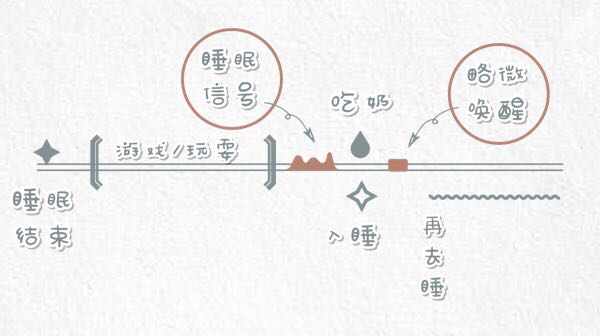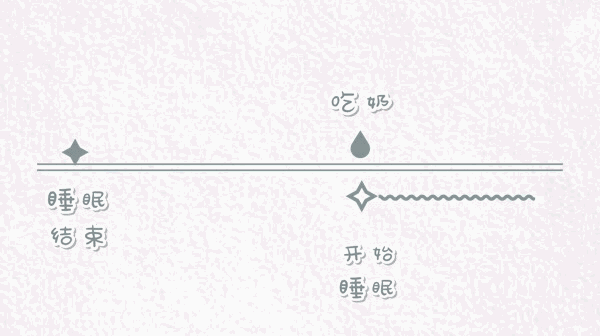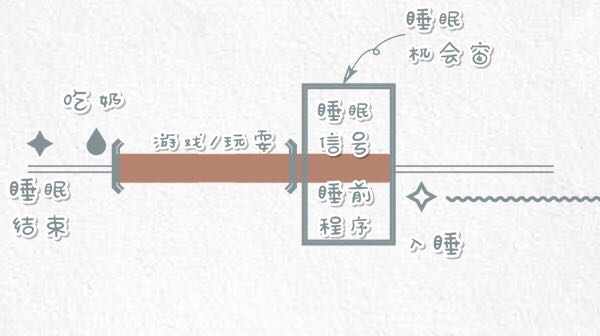
[Milk Sleep] Always makes mothers love and hate: love its miraculous effect of instantly soothing babies, and hate it can never give up.
In fact, for small-month-old babies, there is nothing wrong with pacifying them by sleeping with milk. Sucking will make the baby feel natural and relaxed, and then fall asleep smoothly.
If the baby sleeps soundly after eating milk, then parents do not need to regard milk sleep as a completely untouchable forbidden area.
However, if the baby has a situation of [not sleeping without milk, waking up after stopping milk], and the daytime naps also begin to shorten and it is obviously difficult to fall asleep, mothers have to consider the matter of milk sleep again.
Clove mother invited sleep consultant Zhu Xiaojie today to tell us how to help the baby get rid of milk sleep.
Dabao of my family was a contestant who did not sleep without milk, woke up when he stopped milk, took short naps during the day, had frequent milk at night, and had n times of milk a night.
Before her 13 months ago, I completely forgot what it was like to sleep until dawn.
If you are as exhausted as I was then, I hope this article can help you.
Two Principles to Adhere to in Abstaining from Milk Sleep

1. Never [cry and feed]
Milk sleep is not only a matter of sleep habits, but also a matter of feeding. The mother’s breast has no scale and does not directly reflect the amount of milk the baby eats in a single time like a bottle.
Therefore, when the baby cries, it is easy for the mother to sum up all the needs behind the baby’s crying into one reason because of the uncertainty in her heart-hunger, and quickly take off your coat will bring the baby to nurse.
According to crying feeding, it is easy for the baby to form the habit of eating [snack milk], resulting in insufficient milk drunk during the day, thus increasing unnecessary night milk.
2. Keep the distance between [milk] and [sleep]

Babies accustomed to nursing sleep actually regard nursing as a sleep hint: [I’m going to sleep after nursing].
Mothers can adjust their schedules to avoid breast feeding and sleep crashes, such as setting a special [sleep program] for their children.
A reasonable and stable bedtime procedure will give the baby a positive sleep hint and let the baby know that when these procedures appear, it means going to bed next.

When we arrange nursing before the bedtime procedure, the hint becomes [nursing, bedtime procedure, I’m going to bed].
In this way, the interval between nursing and sleeping is further widened in time.
Mothers can advance the original feeding time and set aside sufficient time to arrange the bedtime procedure before the baby’s regular sleep time:
- It takes about 10 ~ 15 minutes before taking a nap during the day. It is recommended to arrange 20 ~ 30 minutes before going to bed at night.
At the same time, when nursing, mothers can try to change the nursing environment, such as changing from lying in bed to holding in chair, or feeding milk in other quiet places before entering the bedroom.
Five Soothing Ways to Replace Milk Sleep

Among the parents I contacted, a large number of mothers went into the pit of milk sleep because they did not know that there were other ways to appease their babies besides milk.
Many kind-hearted people have taught them the experience that [when the baby is young, he will sleep when he eats milk]; After the mothers enter the pit of milk sleep, these people will say again, “Children are like this, it is good to grow up.”
As shown in the following figure, besides feeding the baby, there are actually many other ways to appease the baby.

According to the degree of parents’ intervention, there will be many different levels of ways to appease the baby, just like a pyramid.
At the bottom of the pyramid is the easiest way to sleep with milk, and it is also the most comforting way for parents to intervene.
When changing the habit of milk sleep, the alternative soothing method that is often used is to hold sleep soothing, or to sleep on the move (such as pushing a cart to coax sleep).
Parents need to pay attention to the fact that the soothing methods of sleeping in arms and carts are only applicable to the transition period of abstaining from milk sleep, otherwise it is easy for children to form new dependence.
Continuing to the upper level is the transition from sleep in action to sleep at rest.
In this process, you can pat the baby with a simple rhythm, gently press the baby’s small hands and feet, cooperate with soft voice, and accompany the baby to sleep at close range.
When the baby adapts to this kind of comfort method, the sleep condition of most babies will obviously improve.
Mothers can continue to increase their baby’s autonomy when falling asleep, leaving only the comfort of voice and language to accompany the baby to sleep.
On this basis, mothers can choose to slowly evacuate from the baby’s side, from close companionship to waiting outside the house, and only enter the house to appease the baby when he needs it.
The baby adapts to this new comforting method and can fall asleep within 15-20 minutes without his mother’s company.
At this time, we can say that the baby has the ability to sleep on his own.
Time to Abstain from Milk Sleep: Sleepiness Window

When the baby is just beginning to feel sleepy (when sleep signals appear), pacifying the baby to sleep is more conducive to the baby to accept new pacifying methods and quit milk sleep.
Babies at different stages of growth and development will also show different sleep signals.
1. Babies can control their head stages
Small faces or eyes leave people, things and things as if to avoid contact with the outside world. If they are held in their arms by adults, they will bury their little faces in their chests.
2. The baby can control his limb stage.
Babies blink, scratch their ears and scratch their little faces.
3. The baby can control his trunk stage.
When playing, the baby seems to lack coordination and loses interest in toys. If they are held by their parents, they will bow their backs and lean back.

4. The stage when the baby can crawl or walk
Babies will show signs of poor coordination and are prone to wrestling, slipping or hitting other objects. If they are held by their parents, they will often slide down.
When babies are tired, they yawn like adults.
However, the above sleep signals often appear before the baby yawns, and parents should pay special attention to them.
Don’t start rashly and don’t give up easily.

Milk sleep is sometimes not only a matter of sleep habits, but also a matter of hidden baby’s unmet needs.
Parents had better check whether there are other reasons for the baby to [not sleep without milk] before helping the baby to give up milk.
For example, babies who are in separation anxiety have insecurity, thus loving milk and relying on milk to sleep. Or the baby is unwell and has more sucking needs, resulting in milk sleep.
It is suggested that parents should give themselves at least 7-10 days to firmly implement the milk sleep improvement plan suitable for themselves and their babies, and adjust while implementing it.
Next, it will take another 7-10 days to consolidate the previous baby’s sleep improvement results.
Only when we do not start rashly, do not give up easily, often review and adjust, can we fight the crucial battle of getting rid of milk and sleep.
